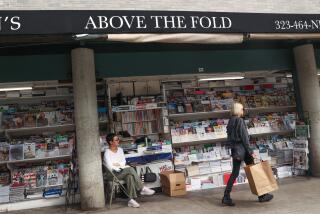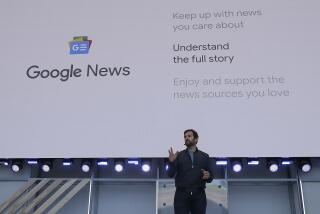We still need news judgment
MOUNTAIN VIEW, CALIF. — I’ve felt a bit quaint the last couple of days, toting a pen, a notepad and my old journalism notions around here at the Googleplex.
I’d once thought that a journalist’s (and journalism’s) work ended when a story cleared the copy desk. But a two-day blizzard of power-point presentations in the heart of the Silicon Valley pounded home a notion that the media and their foot soldiers need to do much, much more to thrive in the midst of an information revolution.
We’re talking about media letting the audience increasingly into the middle of the conversation. We’re talking about shifting from producing single articles to curating “topic pages” from many sources. We’re talking about building block-by-block databases so readers can find not just the latest news but also crime stats, school test scores and home values for their neighborhoods.
Then all that information must be promoted via social networks like Twitter and Facebook, according to several speakers at UC Berkeley’s Media Technology Summit. When a bubbly young Web marketer told about 100 assembled reporters, editors, scientists and media executives that they must build their “whuffie factor” (more on that later), nobody batted an eye.
The bottom line: Journalists and media outlets will have to plunge into new territory and do it without any assurance that the extra work will make them enough money to keep reporting the news.
Most in the media have responded to challenges from the Internet with lots of talk about innovation but only halting action.
The result can be seen in hemorrhaging ad revenue and decimated news staffs. Neil Henry, dean of UC Berkeley’s Graduate School of Journalism, told the gathering in an auditorium on the sleek Google campus that the Bay Area already has lost half of its professional news reporters.
But this week’s meeting attempted to depart from the ink-stained kvetching that can dominate these gatherings, with an emphasis on the technology-happy crowd explaining all the opportunities that the Internet provides.
“There has been a lot of lip service until now. But we can’t measure what we do by asking: Is anybody else doing it?” said Alan Mutter, an analyst and one-time newspaper editor and media investor, who organized the conference for the Berkeley journalism school. “Innovators don’t have great peripheral vision. Innovators are looking ahead. They are looking over the horizon.”
The meeting kicked off Wednesday with John Temple, the former editor and publisher of the Rocky Mountain News, which closed in February after 150 years in business. “I feel like a cadaver being asked by the funeral director, ‘How did you like the flowers?’ ” Temple said, before offering his autopsy on the paper.
Temple said the much-celebrated Rocky and other papers have been so worried about their printed product (which brings in the vast majority of the ad revenue) they’ve given short shrift to expanding Web opportunities.
A user-powered review site like Yelp.com could and should have been driven by newspapers, Temple suggested. But they would have fretted, he said, over minutiae like citizen contributors misspelling words.
“People running a new venture need to be free to do what’s best for that business,” Temple said, “regardless of the potential impact on the old.”
Others at the event supported the call for increased openness and experimentation.
An executive with Thomson Reuters, parent of the wire service, touted the company’s OpenCalais project, which tags and catalogs millions of pieces of information, data that will be made available to other news organizations.
Lone stories don’t have much value. But organizations that can group information will find “the value of aggregated mega-data is high,” said Thomas Tague, a vice president with the company.
Richard Gingras, chief executive of Salon Media Group Inc., argued that “the core of the matrix” for news outlets in making transactions is no longer an entire website but individual stories. Because at least half of the audience on most websites arrives there after an Internet search, stories become much more attractive when they are enriched with articles, graphics, reader discussion and the like, Gingras said.
EveryBlock.com, recently purchased by MSNBC, and the Los Angeles Times hope to apply that theory to neighborhoods they cover, augmenting news with street-level statistical compilations of everything from crime locations to test scores.
Next, journalists need to continue promoting themselves and their work with more gusto on social networks like Twitter and Facebook, said Web marketing consultant Tara Hunt.
Hunt invoked “whuffie,” the ephemeral social capital imagined in a science fiction novel, to make her case.
“Building your whuffie is building trust, doing good things, embracing the chaos [of] the social networks,” Hunt said. “That’s at least 50% . . . of the work that you are doing.”
Maybe it was that pep talk that had me passing on the peanut butter and jelly and opening myself to the lentil bean sandwich I found at Google’s abundant buffet.
But amid the celebration of the multiplicities, opportunities and creative chaos of the Web, one Google executive, Bradley Horowitz, also acknowledged that consumers might be drowning in media, e-mail and the “social stream.”
“Tools are needed,” he declared, “to preserve your most precious asset: your attention.”
So maybe, even in the age of Google, consumers are looking for someone to help cut through all the clutter to get at the important facts.
Sounds to me like they’re looking for a journalist.
--







